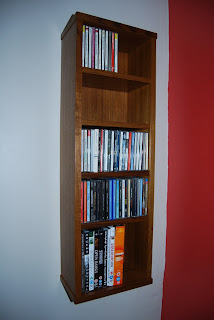
The little oak box didn't turn out too badly after all...you can see from the pic that the 'precision sanding' technique worked very well as the front of the lid sits true and level.

The whole effect is fairly chunky and could have been made just a fraction slimmer...for certain the handle is a bit 'agricultural' and had I made it a little daintier then the overall effect would be a bit 'lighter'. The dovetails also extend by around 3mm which on a small box this size is probably too much...2mm would have been more in keeping. The Japanese paring chisels were great for this as the finish on the dovetails has been left straight from the tool, with just a wipe of worn 240g paper to take off the arris.
What's always intrigued me is that a decent piece of work can be made from a couple of lumps of gash timber in the off-cuts box and amazingly...I've still got enough left over to do another one (but not anytime soon) as I'm up and away on holiday...









